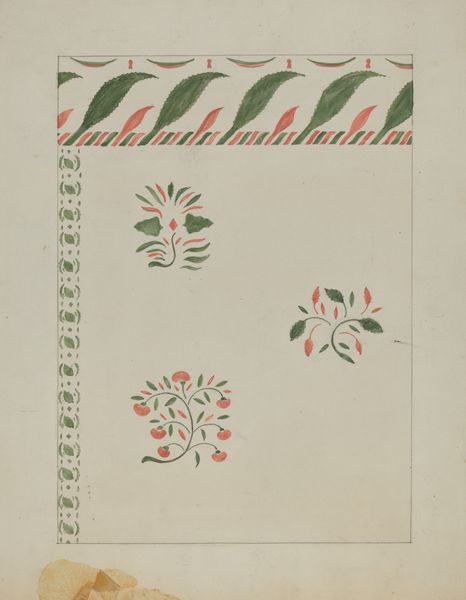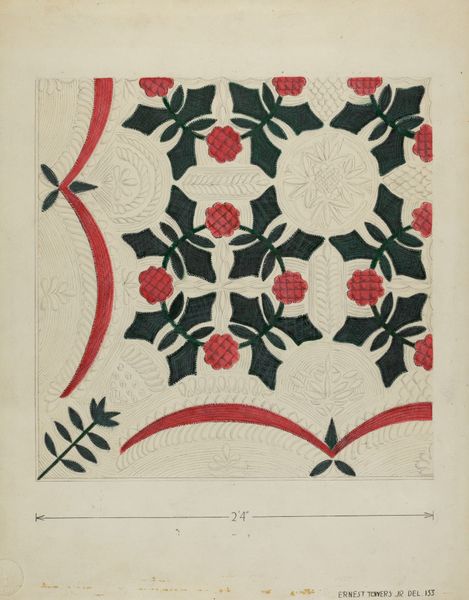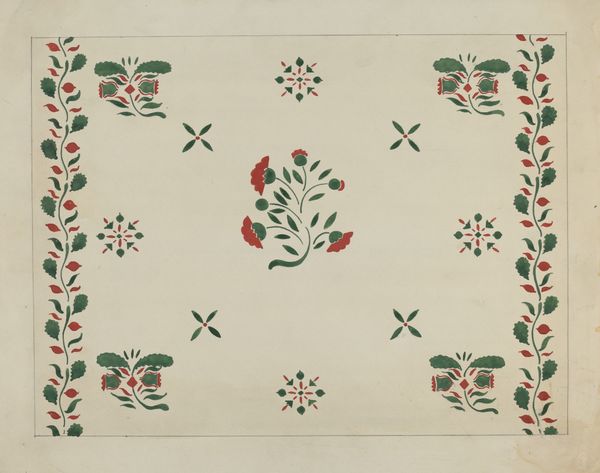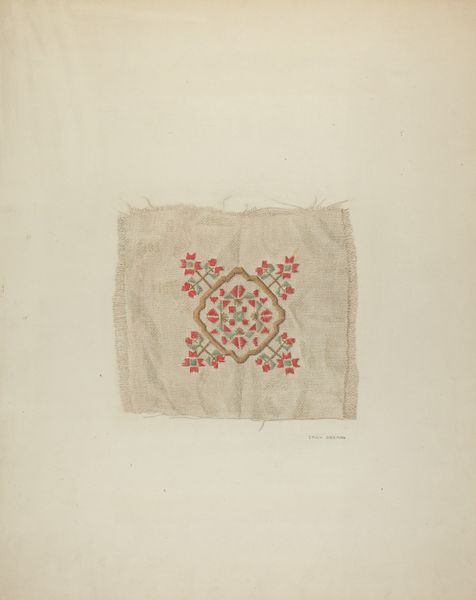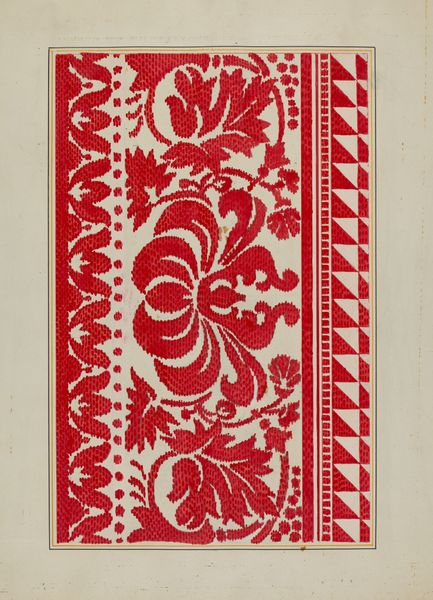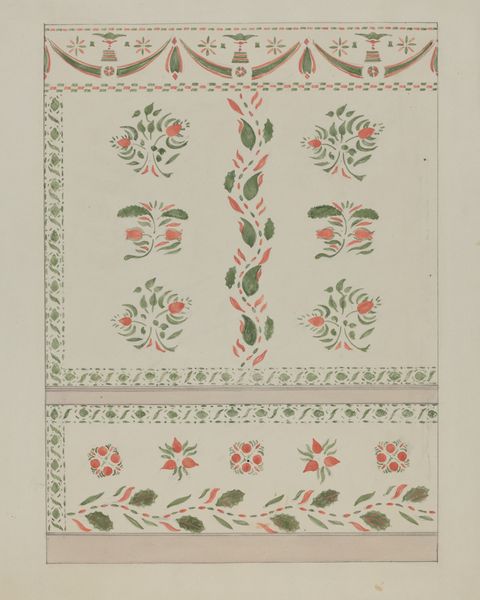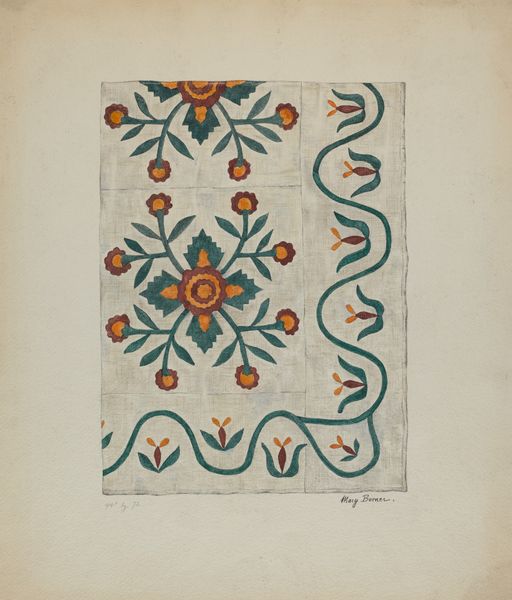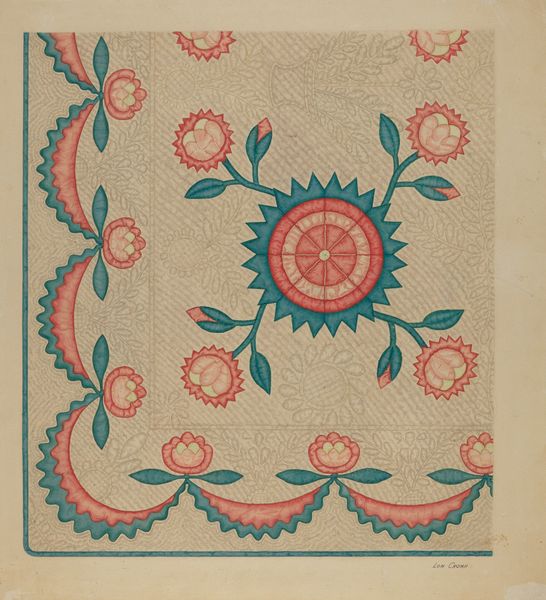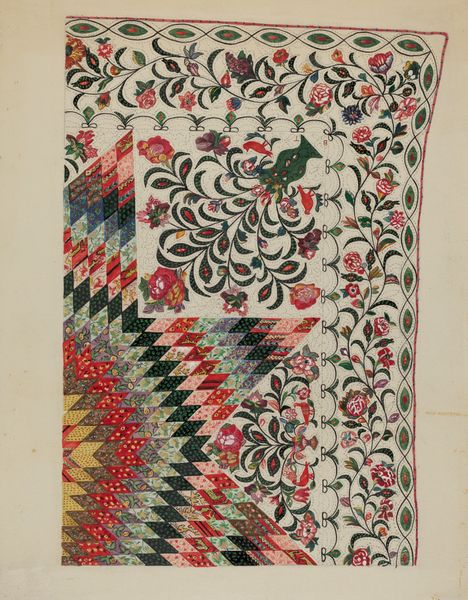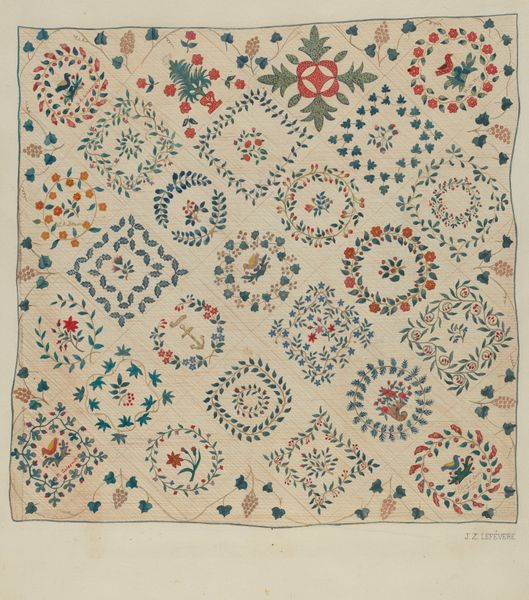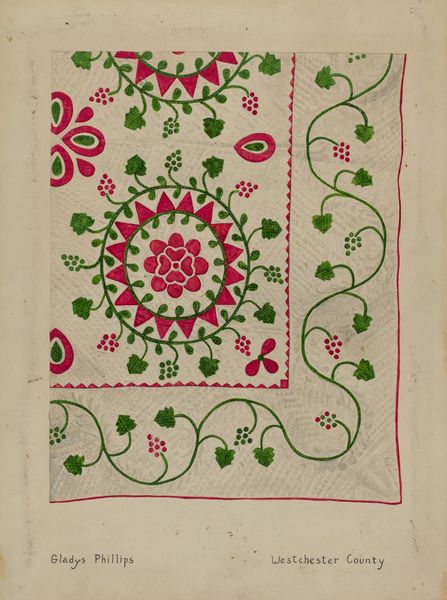
drawing, textile, paper
#
drawing
#
organic
#
textile
#
paper
#
folk-art
#
organic pattern
#
pattern repetition
#
textile design
#
decorative-art
Dimensions: overall: 22.4 x 29.3 cm (8 13/16 x 11 9/16 in.) Original IAD Object: 108" wide; 84" long
Copyright: National Gallery of Art: CC0 1.0
Editor: Here we have Irene Schaefer’s “Bedspread,” from around 1936. It's a design on paper, probably for a textile, with red and green floral motifs. It’s so neat and precise! What social or cultural narrative might be embedded within this folk-art design? Curator: That’s a wonderful question. Think about the context of the 1930s. We see the rise of industrialization juxtaposed with a longing for handmade, personalized objects. The folk-art style speaks to a yearning for simpler times, and the potential for personal expression through domestic crafts in times of social unrest. What does this tension say about women and their creative outlets? Editor: It highlights a space where women could express their creativity and perhaps find economic independence through crafts. Do you think the red and green color scheme bears symbolic weight, in addition to the emphasis on folk traditions? Curator: Absolutely. The colors could speak to notions of folk identity. The choice of such a bright colour pallete on what might seem like a quotidian object asks the question of who defines our aesthetic culture and why are certain patterns/materials deemed feminine. How do textiles made within domestic settings shape and reflect identity formation in this period? Editor: That’s a perspective I hadn’t considered! I was focused on the aesthetic aspects, and it did not immediately occur to me how relevant gender and labour expectations are. It has certainly given me a new appreciation for art’s capacity to weave historical narratives with aesthetic designs. Curator: Exactly! And by understanding the social and cultural layers, we can critically reassess whose histories are overlooked.
Comments
No comments
Be the first to comment and join the conversation on the ultimate creative platform.
